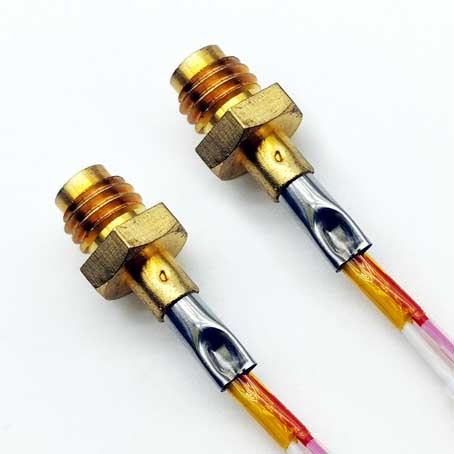Categorie di prodotti
- Interruttore termico 20
- Portafusibili 36
- Sensore di temperatura 67
- Interruttore termico 64
- Fusibile per auto 19
- Fusibili imbullonati 7
- fusibile termico 32
- fusibili a montaggio superficiale 12
- termistore 22
- Portafusibili per montaggio su PCB 27
- Cablaggio 6
- Portafusibili a lama 17
- termostato 46
- Fusibile elettrico 14
Tag dei prodotti
Sensore di temperatura del termistore per apparecchi elettrici
Come tutti sanno, i piccoli elettrodomestici , Come un popolare attrezzo da cucina per la casa, Non solo ha la funzione del riscaldamento, ma ha anche molte funzioni automatiche. Per esempio, conservazione automatica del calore, acqua bollente automatica, Cucina di riso automatica, cucina automatica della zuppa e altre funzioni. La realizzazione di tutte queste funzioni automatiche richiede che i piccoli apparecchi siano in grado di misurare e controllare accuratamente la temperatura. I piccoli apparecchi esistenti utilizzano principalmente un sensore di temperatura per la misurazione della temperatura. Ad esempio:
Come tutti sanno, i piccoli elettrodomestici , Come un popolare attrezzo da cucina per la casa, Non solo ha la funzione del riscaldamento, ma ha anche molte funzioni automatiche. Per esempio, conservazione automatica del calore, acqua bollente automatica, Cucina di riso automatica, cucina automatica della zuppa e altre funzioni. La realizzazione di tutte queste funzioni automatiche richiede che i piccoli apparecchi siano in grado di misurare e controllare accuratamente la temperatura. I piccoli apparecchi esistenti utilizzano principalmente un sensore di temperatura per la misurazione della temperatura. Ad esempio:
As shown in FIG. 1, it is a schematic structural diagram of a conventional Small appliances temperature sensor having a probe 2 for contacting the Small appliances panel 1. The probe 2 is a thermal sensitive device such as a thermal resistor. A rubber seat 3 made of a heat-insulating material fixes the probe 2 on the top. Poi, the rubber base 3 is installed in the center of the Small appliances panel 1, so that the probe 2 is fully in contact with the Small appliances panel 1, and the lead 4 is also led out of the probe 2. The temperature signal is transmitted to the microprocessor of the Small appliances by the lead wire 4 for further processing. With this Small appliances temperature sensor, since the area of the probe 2 is limited, the contact area with the Small appliances panel 1 is also limited. Inoltre, since the shape of the contact portion of the induction cooktop plate 1 and the probe 2 may be uneven, it is not possible to guarantee complete contact between the two. Inoltre, as the rubber base 3 ages during use, the possibility of incomplete contact increases, which causes the temperature measured by the probe 2 to be inconsistent with the actual temperature of the Small appliances panel 1, thereby affecting the use of the Small appliances.
The temperature sensor on the Small appliances is actually a semiconductor thermistor with a negative temperature coefficient. The resistance value will decrease as the temperature itself rises, and the temperature will rise, and the voltage across the resistance will change through the change in resistance. If it is not connected, the Small appliances will cause an alarm and it will be dangerous.
Generalmente, two types of resistors with the same specifications are used inside the Small appliances: One detects the furnace surface temperature, One detects the operating temperature of IBGT. When you open the top cover on the Small appliances, there is a circular element in the center of the base, which is the temperature sensor for the Small appliances.
The temperature control of the Small appliances is transmitted to the IC chip and converted to a temperature value according to the resistance value of the thermistor. In order to meet the different temperature heating methods. The other temperature sensor is fixed on the heat sink aluminum plate or squeezes the power tube. Ovviamente, some temperature sensors are installed on the circuit board near the heat-dissipating aluminum plate, which looks the same as the middle under the panel.
Common troubleshooting methods of Small appliances:
1. The fan does not turn: Check the fan power supply and check whether the voltage at the 18V switching power supply is normal.
2. The fan has noise or rotates: Check if the CPU's crystal welding position is correct, and whether the pads are de-soldered.
3. Power is not adjustable: Check whether the CPU works normally (measure the voltage of the relevant pins), and see if the potentiometer (VR) on the motherboard that regulates the current is normal.
4. Start without heating: Check whether the temperature-sensitive thermistor is short-circuited, check whether the inductor L3 is soldered or damaged, and check whether multiple high-power resistors on the motherboard are damaged.

SEMITEC thermistor chip probe

Custom Shibaura thermistor sensor probe and cable

TDK Thermistor Sensor Probes and Cables

Sonde e cavi del sensore NTC per elettrodomestici
Contattaci
Aspetto la tua email, ti risponderemo entro 12 ore con le preziose informazioni di cui avevi bisogno.
 English
English العربية
العربية Български
Български 粤语
粤语 中文(简体)
中文(简体) 中文(漢字)
中文(漢字) Nederlands
Nederlands Suomi
Suomi Français
Français Deutsch
Deutsch Ελληνικά
Ελληνικά Magyar
Magyar Italiano
Italiano 日本語
日本語 한국어
한국어 Polski
Polski Português
Português Română
Română Русский
Русский Slovenščina
Slovenščina Español
Español Svenska
Svenska ภาษาไทย
ภาษาไทย Türkçe
Türkçe Tiếng Việt
Tiếng Việt

